Between 2019 and 2023, the number of global eCommerce sites grew from 9.2 million to 26.5 million, according to Markin Blog[1]. Even if 20% of those brands share the same niche with you, that leaves you with more than 5.3 million companies to compete with.
Without a proper marketing strategy, your brand has little to no chance of standing out amongst so many online competitors.
PPC (pay-per-click) is one of the top digital marketing strategies for eCommerce businesses since you get either results or valuable insights in a short period. For most eCommerce brands, the PPC path is not linear and requires many tries and errors to have several successful campaigns.
The most common PPC mistake that almost all of the brands make is setting their targeting too broadly (spray and pray technique), which drains their budget extremely quickly before they have a chance to get any results. Another mistake that is almost as common as the first one is taking the “set and forget” approach to advertising. Constant updates and optimizations are required to maximize your results.
By guiding a campaign that generated a 13x ROAS and an average ROI of 10x for Icy Bear, we learnt how to make every penny count.
In this PPC management for eCommerce guide, we will share everything you need to know about Google and Facebook ad campaigns, including best practices and some successful PPC case studies.
If you sell on Amazon, don’t miss out on this video:
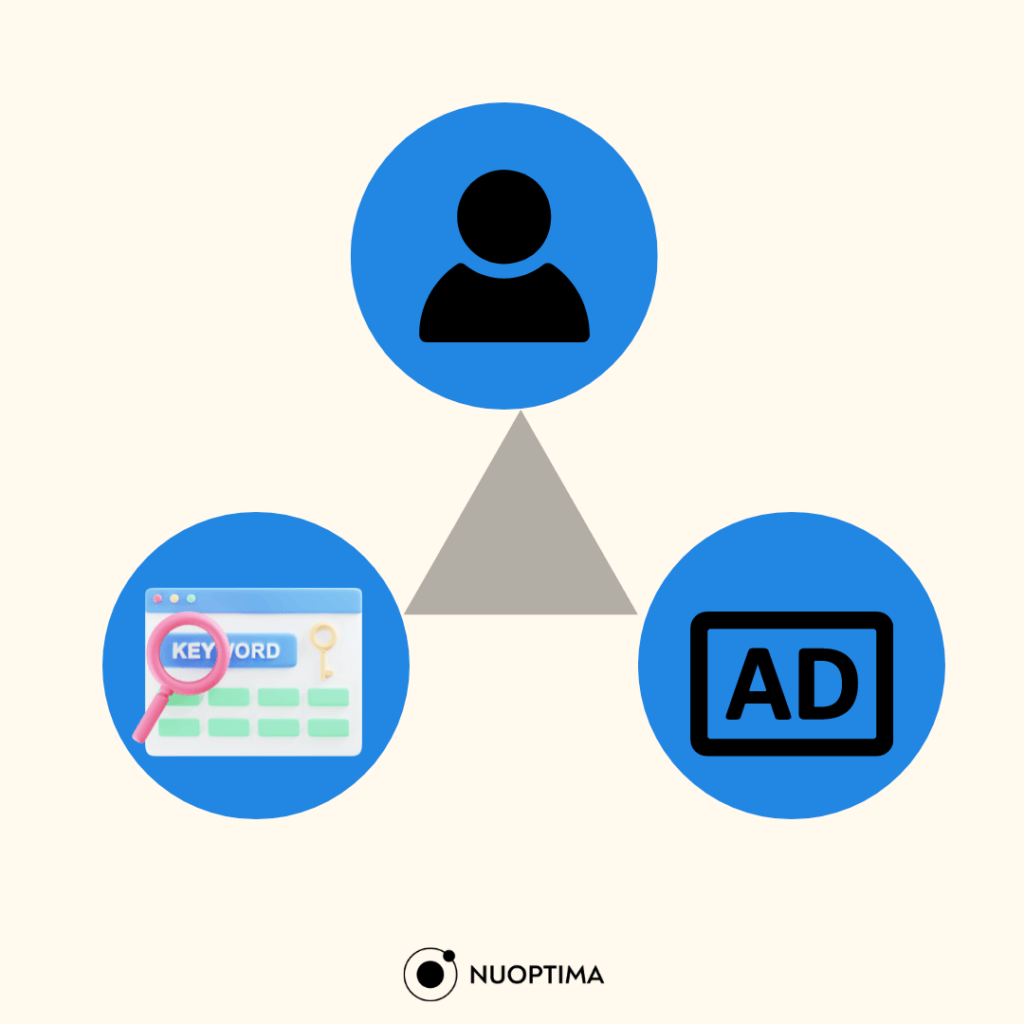
What is eCommerce Pay-Per-Click (PPC) Management?
What is PPC for eCommerce in general? PPC (Pay-Per-Click) for eCommerce is the process of creating and managing online ad campaigns where the eCommerce brand pays a fee each time one of their ads is clicked.
The goal is to drive traffic to an eCommerce website and ultimately convert that traffic into sales. To advertise something besides your products and the creatives you will use (images, videos, copy), you need to pick an advertising platform.
How To Start and Manage Your PPC Campaigns in 5 Steps?
Let’s start off by preparing your campaigns and managing them from start to finish. Follow these five steps, and you’ll easily pull off your first PPC for ecommerce sites campaign:
1. Choose Your Advertising Platform
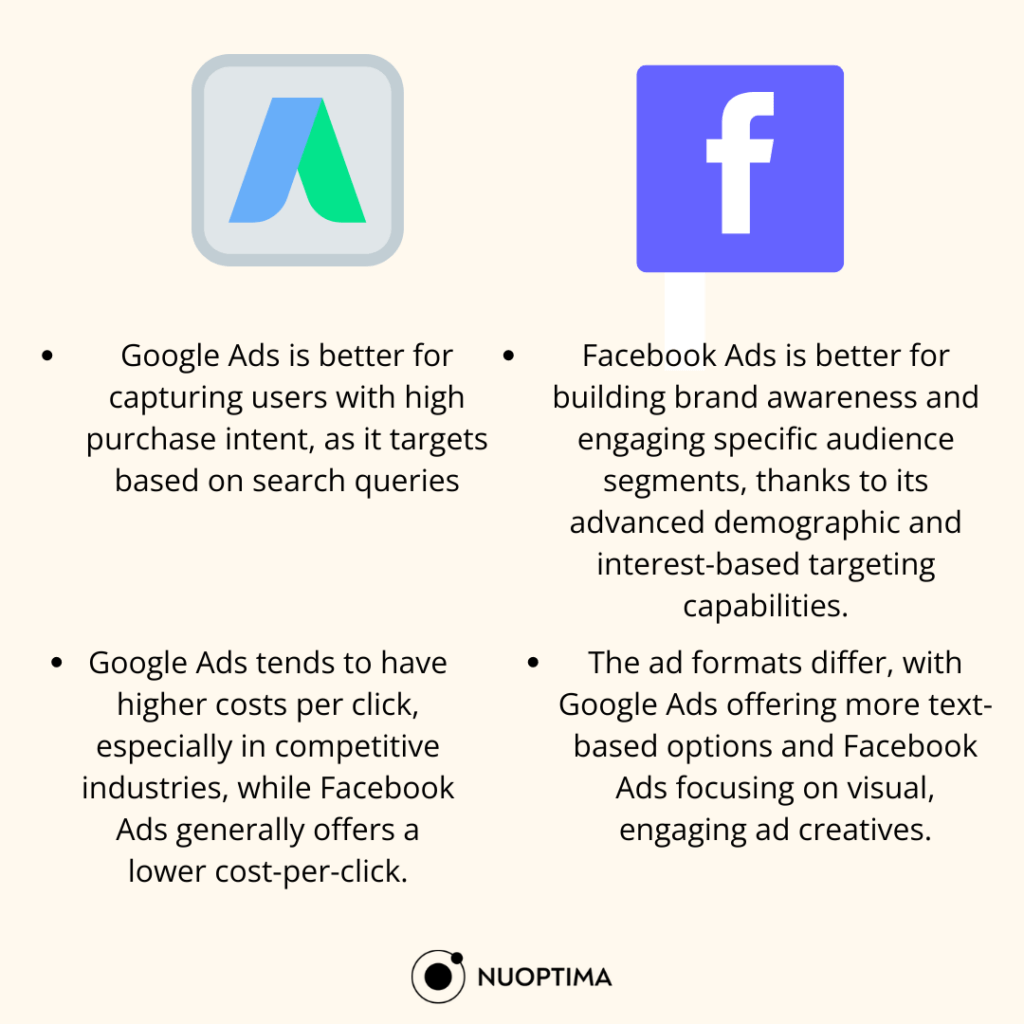
Google and Facebook ads are considered the best advertising platforms for eCommerce PPC because of their extensive reach, advanced targeting capabilities, and useful advertising features.
Facebook and Google ads are two well-known, tried and tested advertising platforms which is why this article will focus on them. Of course, never be afraid of testing out new and upcoming channels, such as TikTok or LinkedIn ads, if you’ve mastered these two and have the budget for experiments.
Google Ads
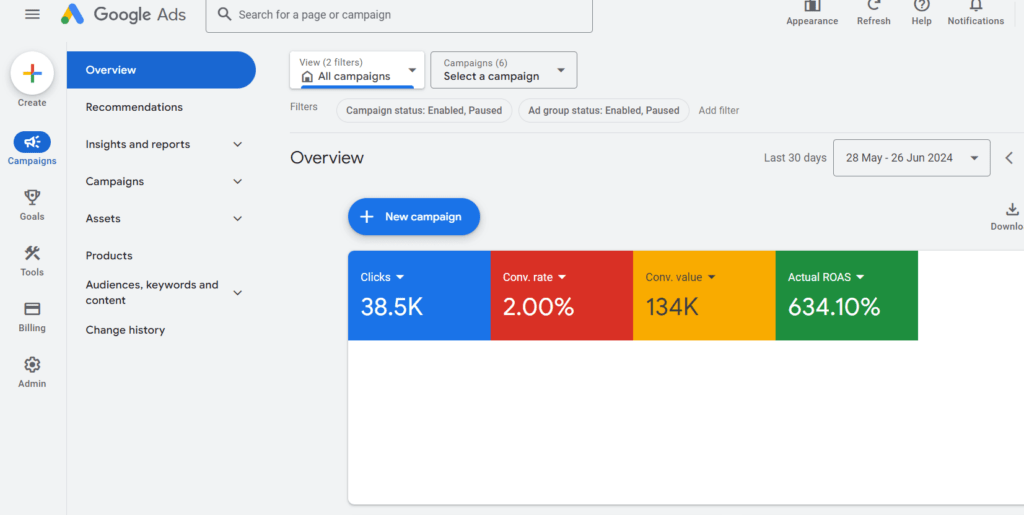
On Google Ads, you can create different types of ads (all falling under the four categories we will explain below) and publish them on Google’s vast network, including search results, third-party websites, YouTube, and mobile apps.
To start a campaign, you need to select an advertising goal. Common goals for eCommerce businesses are “getting more sales for specific products” or “increasing visits to physical locations,” etc.
If you have the budget and this isn’t your first PPC rodeo, our Google Ads agency suggests running multiple campaigns at the same time is a common practice, especially when the purpose of those campaigns is completely different.
To reach your audience, you can choose between different targeting options, such as:
- Keywords: Target users based on the words they use to find your products
- Demographics: Reach specific nationalities, age groups, interests, behavior, gender
- Location: Advertise to users in specific geographic locations
- Remarketing/retargeting: Reach users who have shown interest in your products or website previously
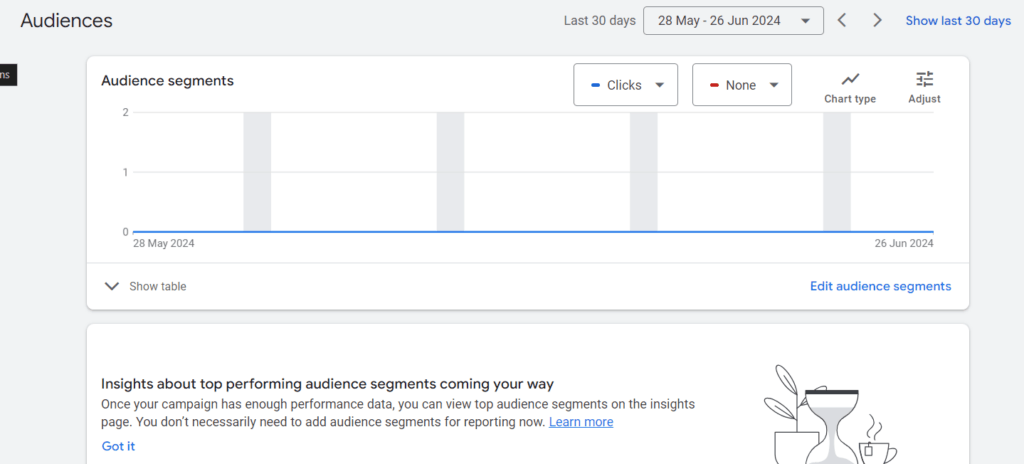
To navigate the cost of every click, you can set daily and monthly budgets and set bidding options such as:
- Manual CPC: You set the maximum amount you are willing to pay for each click. You set a bid of $2 for the keyword “dancing shoes.” You won’t pay more than $2 for a click on your ad.
- Target ROAS: Automatically set bids to achieve a desired ROAS. You set a target ROAS of 400%. Google Ads will adjust bids to try to maximize conversion value while aiming for a 400% return on your ad spend.

Finally, for Google ads, you will need to choose one of the four major categories that define where and how your ads will appear. By knowing these types of ads, you will maximize spending while getting the biggest possible ROI.
1. Search Ads Category

Search Ads are those ads that appear at the top of the search results before organic results. Within the “Search Ads” type, you can have:
Branded Search Ads: These ads appear when a customer uses your brand name in the keywords, like the above Zappos example. Branded keywords are very relevant—users are searching for you specifically, so the conversion rate will be higher. That is great because the cost per click will be low (up to $4 per click approximately).
There is a “controversy” surrounding branded search because many new brands think, first of all, that nobody will Google their brand name, or why would they spend their budget on people who will eventually find them on the SERP?
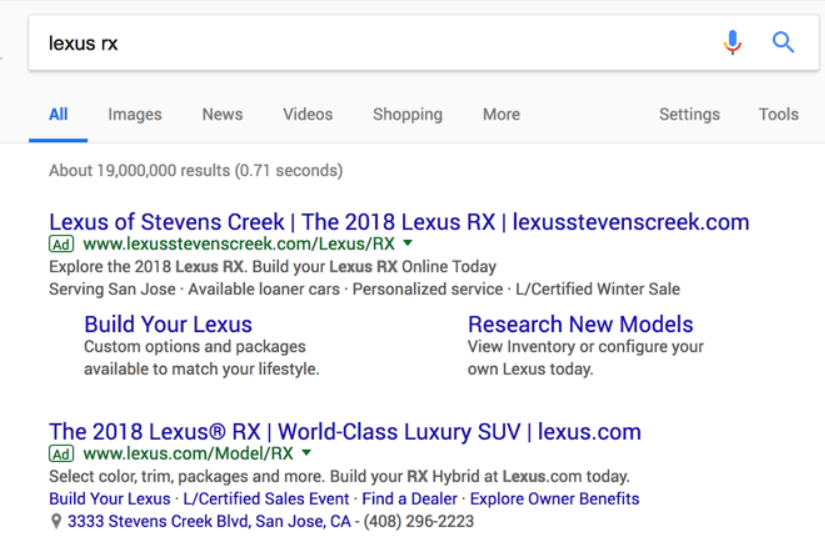
Based on our experience, if you don’t take over the portion of the SERP, big brands like Amazon will “eat it up” and cover 99% of the SERP. Even if you have 10%, you will still take away a portion of their conversions.
As for SEO vs Google Ads, branded search ads give you a clear advantage when directing your buyers to specific products/pages. This is especially effective when you want to sell the latest model or a specific product. Instead of them buying any product, they will buy a specific product you target with ads.
Apple does that whenever their latest Iphone drops. Instead of relying on people to buy the latest model, they use branded keywords and promote the latest model for “iphone price”, etc.
Non-branded Search Ads: These ads contain product keywords but do not mention a specific brand name. The goal is to catch the people who have the intent of buying what you offer but don’t know your brand specifically. The cost is higher than for branded search (up to $30 approximately per click).
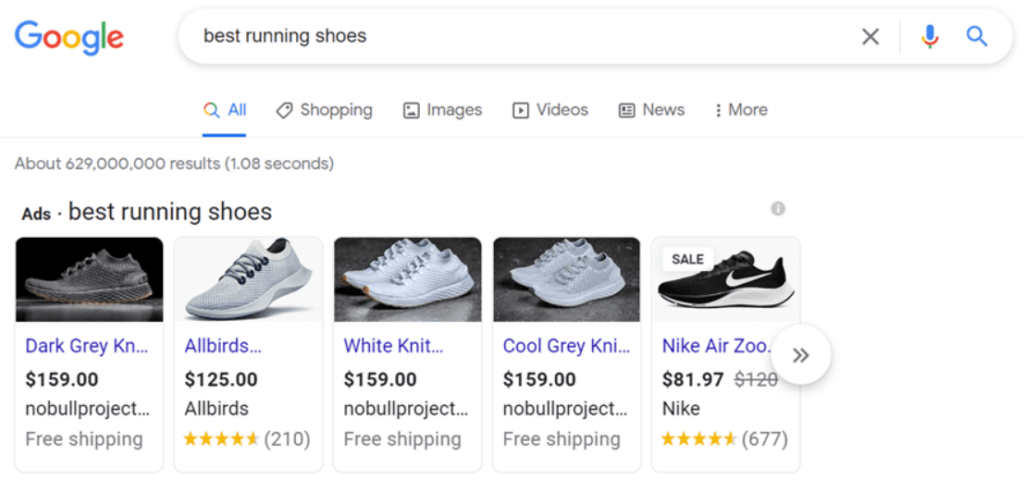
Dynamic Search Ads: Google’s site scrappers scrape the content of your website, extract keywords and show your products in relevant SERPS.
This ad type is the most beginner-friendly since it doesn’t require a lot of initial effort on your side. Still, it may not be ideal for eCommerce brands with lots of products or web pages (like Amazon, for example) since Google’s scrappers can easily put you in irrelevant SERPS based on some random keywords on your website. The price per click would be up to $8.
Google Smart Shopping Ads: Google uses its algorithms to display products with pricing, reviews and direct links to the purchase page of your website. There are three subcategories of these ads: display ads, shopping ads, and retargeting ads.
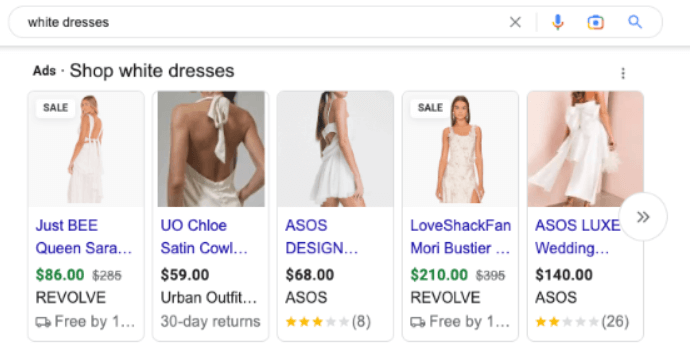
You can choose who to target, which products, and which creative elements to show, and Google even does the bidding for you. We advise this ad type to all beginners since Google does the heavy lifting for you while you can learn and optimize based on results and data, later on implementing that knowledge in other campaigns.
2. Display ads category
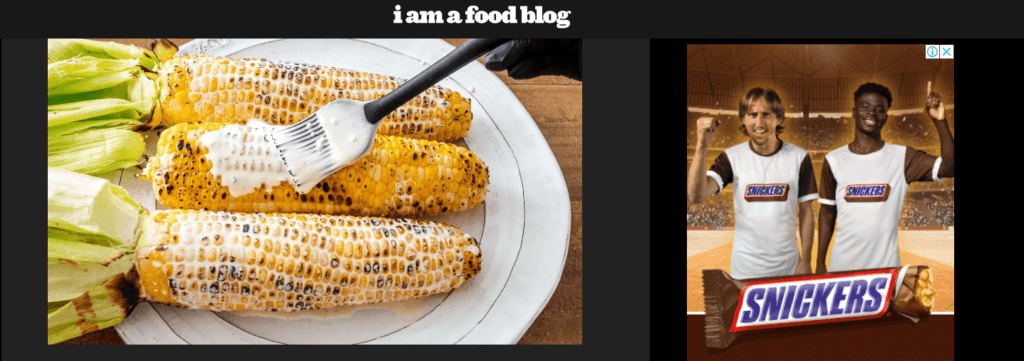
Display ads are images, videos and texts on third-party websites such as news portals or blogs. The relevance can be super high if the third website has a similar target audience to yours and is a part of the Google display network. There are two types of targeting Google does here:
Topic-based targeting will make your ads show on websites that have relevant content (food ads on cooking blogs), while interest-based targeting is when ads appear on random websites just to people who have shown interest in the product before. The cost per click is usually low – up to $3.
3. Video Ads Category
Short YouTube ads that interpret your video fall under this category, and they are also managed in Google Ads. For these ads, you need to create the video, copy and thumbnail on your own, which may take some time and resources.
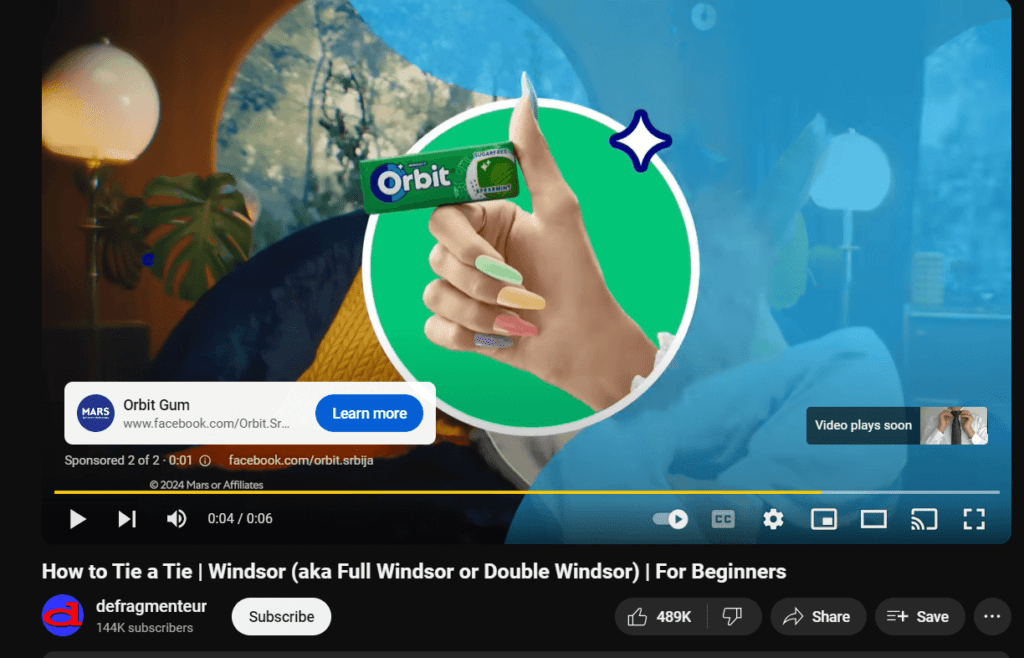
This ad type is recommended for audiences of specific YouTube channels, and they can occur before, after or during the video. Keep in mind that the degree of relevance is highly questionable here since a lot of ads target users who are just here for the video and will find your ad annoying.
However, if you target carefully, you can find potential customers, for example, if you are selling cooking tools to someone watching cooking videos.
4. Retargeting/Remarketing Ads
Sometimes people will visit a website and fill in the cart but leave for different reasons. The goal of retargeting ads is to get these users back to your website with flash reminders throughout the next few days. The degree of relevance is high since they showed interest, so the cost is relatively low (up to $3).
Retargeting ads are great for all types of eCommerce businesses, but they pose a challenge for proper attribution, which we will discuss later.
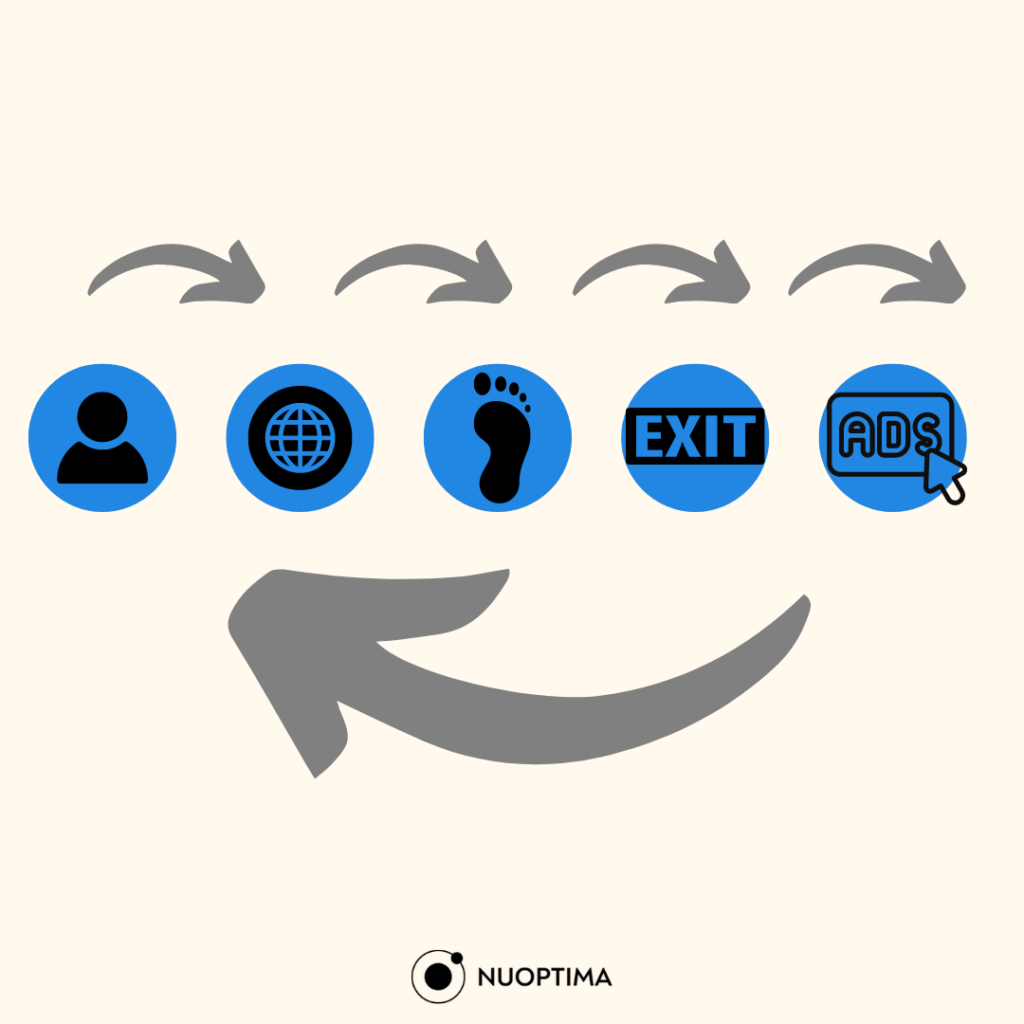
Facebook Ads
On Facebook Ads Manager, you can run ads on two platforms, Facebook and Instagram, so we will list the types of ads according to format and not where they will be placed.
- Image Ads: Single image ads with a headline and description
- Video Ads: Video ads that can run in the News Feed, Stories, or as in-stream ads
- Carousel Ads: Ads with multiple images or videos that users can scroll through
- Slideshow Ads: Ads that create a slideshow from a series of images or videos
- Collection Ads: Mobile-only ads that allow users to browse and purchase products without leaving Facebook
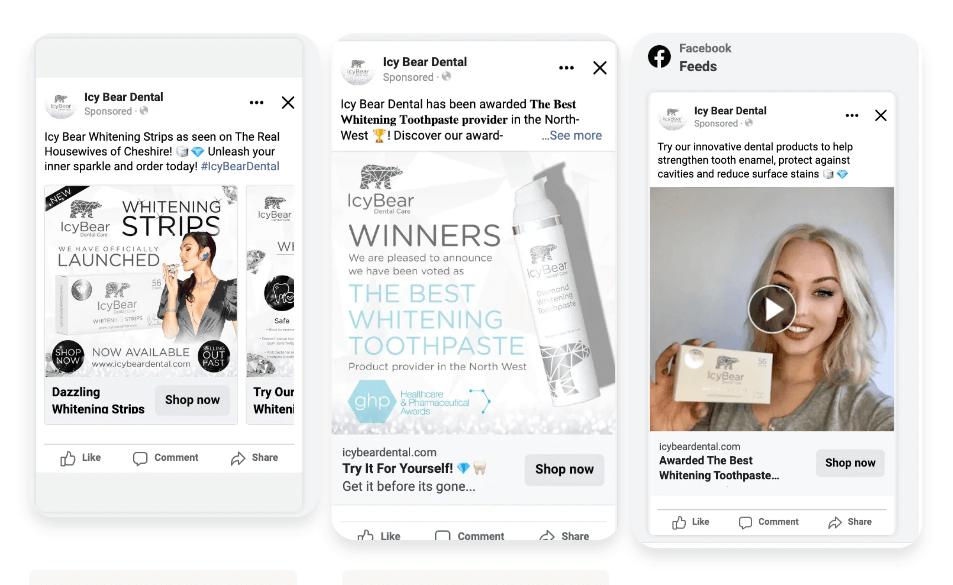
We managed to convert over £20k worth of sales and a 9X ROAS for Icy Bear with different Facebook ads campaigns. We’ve outlined the whole process in our Icy Bear case study.
To run Facebook ads on your own, you need a Facebook Business Page and an account on Facebook Ads Manager. Just like with Google Ads, you will need to make sure you choose an objective/goal for your campaign.
Facebook insists on user segmentation more than Google, so use Facebook’s targeting options to specify the audience you want to reach based on demographics, interests, behaviours, and more.
2. Choose Your Keywords
Keyword research is practically the same for both advertising platforms. Every PPC for eCommerce campaign needs to target a certain keyword, based on which the ad platform will display your ads.
You can use Google’s Keyword Planner or tools such as Ahrefs to find keywords that are relevant to your target audience. With these tools, you can check their monthly search volume, competitiveness, and bid range and adjust according to your priorities, products, and budget.

We talked about branded vs non-branded keywords in the Google Ads section above, so make sure to include both in your PPC strategy for eCommerce. Other keywords should be high-intent ones that will attract customers who are ready to buy.
There are also “negative keywords,” aka keywords that aren’t relevant for your brand you wouldn’t like to target. For some brands, negative keywords are very important. For example “Apple” the company doesn’t want to target “apples” the fruit.
Remember that your keywords aren’t set in stone. Based on your PPC report, you can adjust and select the keywords with the highest conversion potential.
3. Create a Landing Page
After potential customers click on the ad, they will be taken to your eCommerce website or, more specifically, your landing page. The worst that could happen is you paying for a click while your potential customer doesn’t buy anything. One reason for that could be that your landing page isn’t optimized.
A good landing page needs to be visually appealing, relevant to the ad, and packed with keywords and CTAs in the right places. For eCommerce brands, CTAs should be “add this item to your cart” or “contact us” to cover the most common use cases.
Here are some best practices for your eCommerce landing page.
- Use a headline that directly shows the value proposition of your product or offer.
- Have a clear, clickable CTA related to the offer
- Show relevant and real social proof
- Explain the benefits clearly and visibly
- Have high-quality images featuring the product
- Use fonts and colors that are aligned with your brand
- Don’t clutter your landing page with too much information
- Include a special offer or opportunity to bundle products
- Have benefit-centric content and buzzwords that grab attention
Ensure it is fully responsive and offers a seamless experience on all mobile devices.
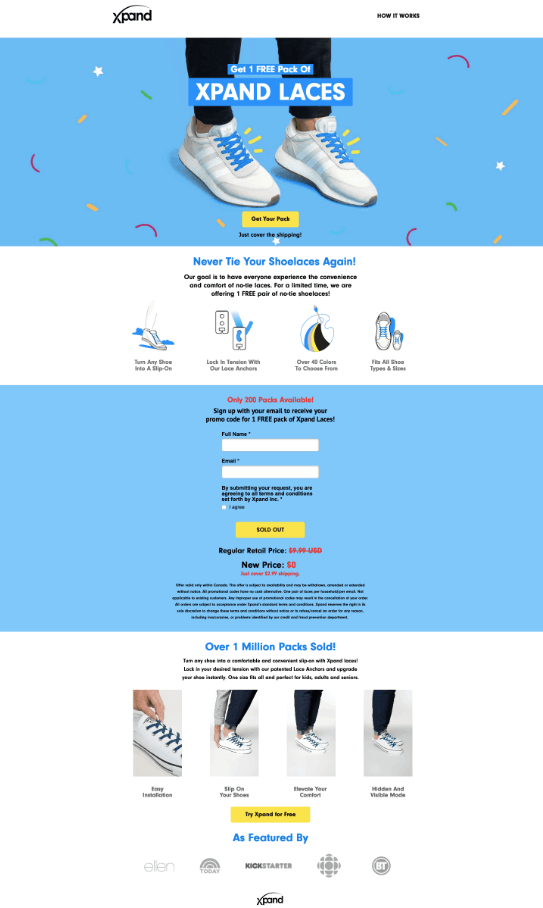
4. Create your Ad
The type of ad you want to run will dictate the assets you will need to create. These assets can be written copies, images, carousels or videos. Make sure your creative assets are visually appealing, catch the viewer’s attention and highlight the product.
Your creatives should have perks like discounts, special offers or free shipping options to prompt a higher conversion rate. These perks give a sense of personalization and urgency, which are key factors of successful PPC for eCommerce campaigns.
Here are some tips for developing your ad creatives:
- Minimize wording and make sure every word has value for the reader
- Use a vertical or square aspect ratio because most people don’t hold phones horizontally
- Add movement or multiple images to make it stand out in the crowd
- Create a sense of urgency to prompt action
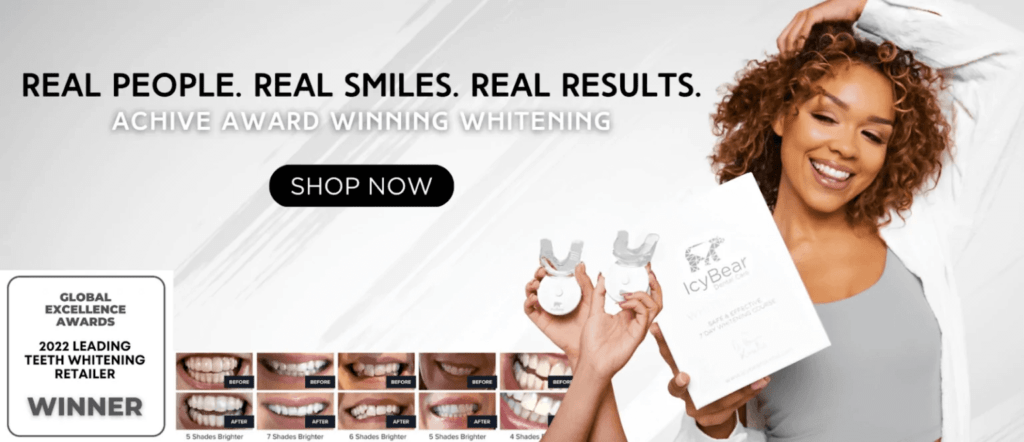
5. Set a Budget & Optimize
Make sure to set the budget you want to invest in PPC before creating your campaigns. With bigger budgets, you can experiment more in terms of channels and campaigns. With a small budget, concentrate on the “beginner-friendly” ad types we mentioned above to get some easy wins, and then optimize and invest more.
You need to remember that there are daily changes, and you need to stay on top of them at all times.
If you have the budget, here is our best practice—for Google Ads, you would ideally want to have a performance max campaign, a search campaign, and a remarketing campaign running at the same time. If the company is targeting several different markets, multiple campaigns become a pure necessity.
For Meta ads, running multiple campaigns isn’t exactly a must, but it is definitely a good practice. The easiest setup for Meta ads is simply to set up one Advantage+ campaign with broad targeting and let machine learning do its job.
However, if you really want to maximize your results, you will take this task into your own hands and set up several campaigns with different purposes—interest testing, retargeting, remarketing, etc.
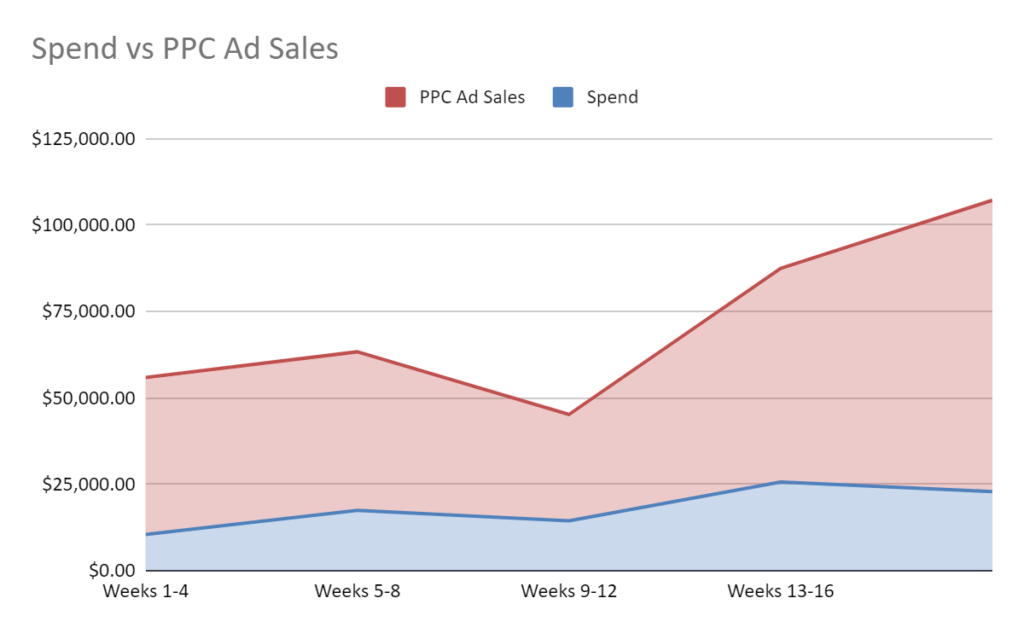
Track and Analyze Your Your PPC Performance
If you’ve set and abandoned your campaign, you probably won’t see good results when you return to it. During and after your campaign, track and analyze your PPC metrics to ensure optimal performance:
- Click-Trough Rate – This metric measures the number of people who clicked on your ad after seeing it. If there aren’t many clicks, that means your ad isn’t relevant or engaging, and you need to optimize the copy/visuals/or keywords for better results.
- Cost Per Click – This metric shows the amount you pay for each click on your ad. Monitor this metric to stay within budget and ensure a positive ROI.
- Conversion Rates – This metric indicates the number of people who took a desired action (in most cases, purchased the product) after clicking on your ad. A high conversion rate shows that your ad, offer, and SaaS landing page are effective.
- ROI – This metric measures the revenue generated from your PPC campaigns minus the cost per click. A positive ROI signals that the campaign is successful.
Tips for refining your ads:
- If not all ads are performing the same, review high and low performing ads to find patterns, language and messaging that work best for your target audience
- If your ROI is low, make sure your landing page is aligned with the ad’s promise and that the loading speed is to the point
- If you don’t have a good ROAS, consider automated bidding strategies for your PPC for ecommerce sites
- Pause keywords or ads that constantly underperform and focus on high performing campaigns
- To prevent your ads from showing in irrelevant searches, use negative keywords
Best Practices for PPC Management for eCommerce
Best practices for PPC heavily rely on the type of business. Some industries see almost no value from Meta advertising, while some don’t see any value from Google Ads.
Selling B2B? The “How to Win Quality B2B Clients with PPC” article is just for you.
A general rule of thumb to follow here (at least for the initial testing if your budget is spread thin) is to keep in mind that Meta ads are a great channel for impulse purchases (since people are usually relaxing and casually browsing on social media), while Google Ads are an amazing choice for any purchases that require a bit more research.
If you decide to run multiple ads and campaigns on different platforms, keep in mind that it may be difficult to gauge real profitability. So far, tools like GA4 give you insights but can’t fully attribute the conversions to specific campaigns. A question that is always on our mind is, “Did the ad really influence the purchasing decision, or would the conversion occur anyway?”
The only way to clear all doubts is to perform incrementality or A/B testing that consists of exposing the test group to targeted ads while withholding the ads to the control group.
Both groups have to be your target audience and fit in your ICP, and the test needs to take at least a month.
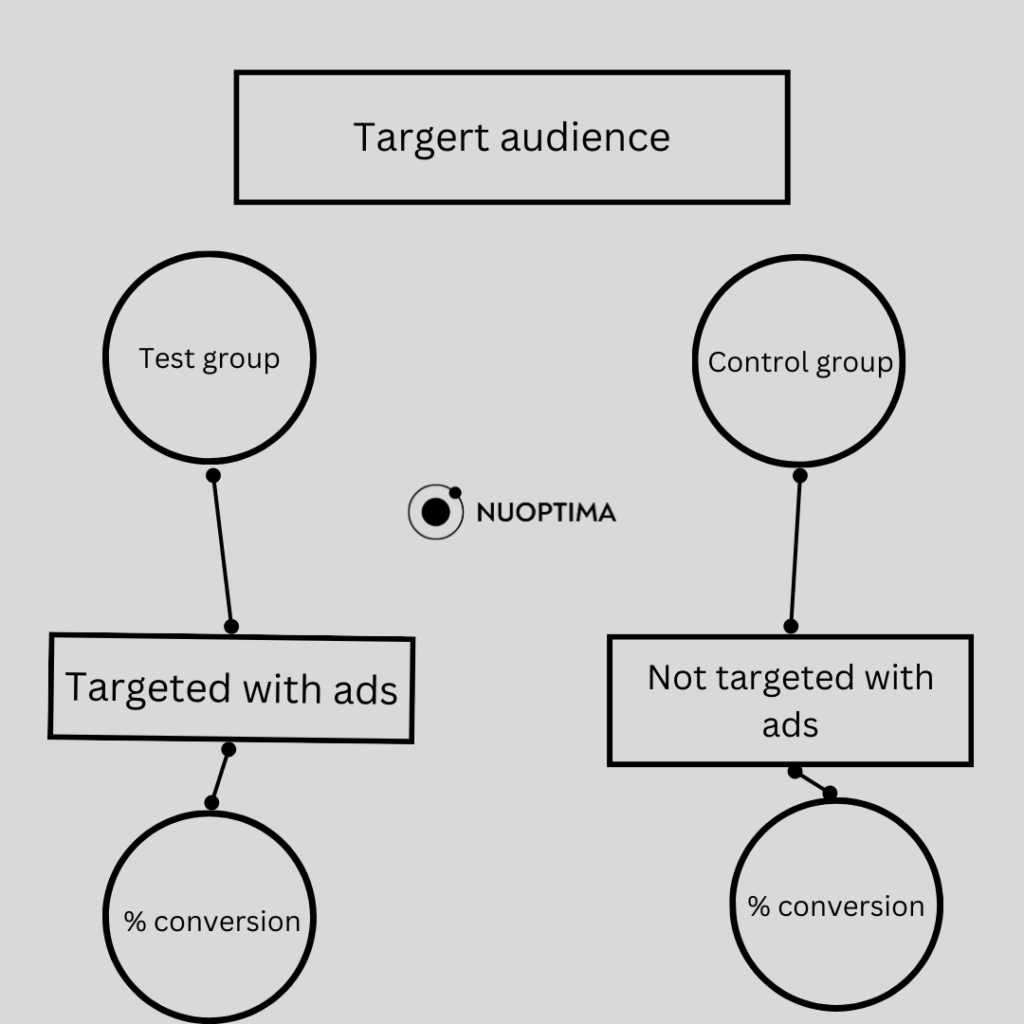
Google Ads – Experiment with New Trends
When talking about the best practices directly related to Google Ads, that would be trying out Performance Max ads, especially in eCommerce, and not being afraid of trying out Google’s new Generative AI that they’ve added recently.
For Icy Bear, we ran a performance max specifically to maximize conversion, resulting in an average conversion rate of 9.59%. You can read more about our eCommerce PPC services in the Icy Bear Google Ads case study.
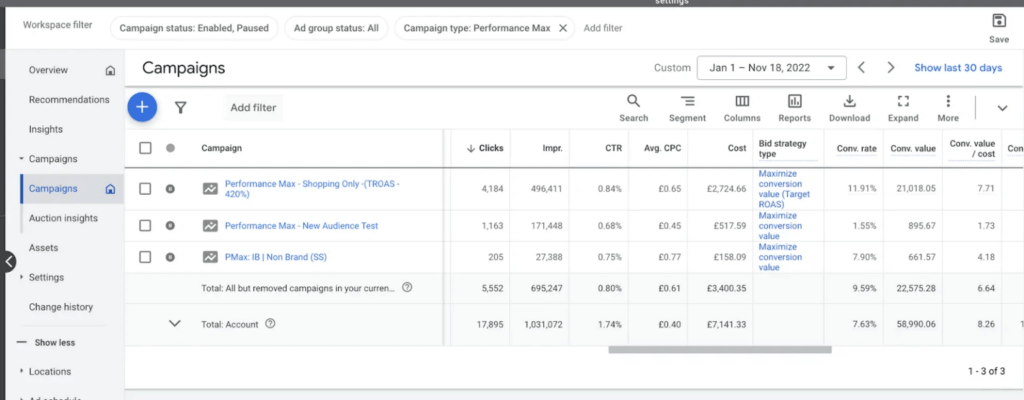
Make sure to take advantage of your special offerings or seasonal fluctuations. For Black Friday, we ran a seasonal campaign for RC Visions. We got over 247 conversions and 1456.19% total ROAS for that period. With other campaigns, we managed to achieve their ultimate goal with PPC, which is ROAS above 500%
Read more about how we pulled it off in just 180 days – RC Visions case study.
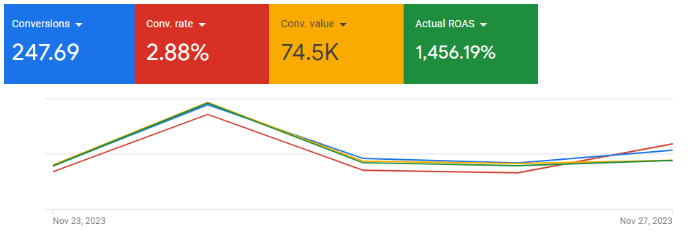
Meta Ads – Look at the Bigger Picture
Regarding Meta ads, be sure to always have one PPC for eCommerce campaign with very broad targeting (prospecting campaign), which will allow you to find new potential winning audiences based on interests that you might have overseen.
We proved that remarketing ads are effective, with a total of 9X ROAS and 17X ROAS for Icy Bear’s Facebook Ads campaign. Check out our eCommerce ppc services in the Icy Bear Facebook ads case study.

How Can NUOPTIMA Maximize Your PPC Management?
Our PPC agency for eCommerce does the heavy lifting when it comes to setting up platforms, picking keywords, bidding, making creatives and tracking daily changes. With a proper PPC strategy for eCommerce brands will see ROAS and conversions after the first campaign has ended.
Many eCommerce brands want to ensure their PPC investment is worth it, and there is no better way than to leave it in the hands of a PPC agency with proven results, like NUOPTIMA.
We’ve run dozens of PPC campaigns for eCommerce businesses and made sure they got the highest ROAS.
If you are a multi-location brand, check out PPC for franchises.
Conclusion
In this article, we’ve gone through the technicalities, creatives and best practices for two most popular advertising platforms, Google and Meta Ads. eCommerce brands can easily invest in an endless black hole if they don’t test and optimize their campaigns every day.
The tips and case studies below will be a great starting point for your PPC management for eCommerce, but if you want to experience great results fast, reach out to our team at NUOPTIMA. We offer our clients the opportunity to become a category leader in their industry, leveraging our expertise to drive exceptional returns on ad spend.
We have great results with companies like Icy Bear, Hex Sport, and RC Vision, so we can make your eCommerce brand a success story for both of us!
FAQ
Yes, PPC can bring more conversions and greater brand awareness for eCommerce brands. However, without proper planning and optimization it can be a pitfall that can cost you more than you will benefit from it.
eCommerce brands should definitely run ads both on Google and Meta ads platforms since they are not exclusive and cover a whole different purpose. Meta ads are great for the awareness stage, Google ads are great for the evaluation stage, and both of them combined do best in all other stages of the sales funnel.




